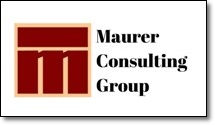What Does a Small Business Website Cost?

Krom Kratthog / www.freedigitalphotos.net
In our Small Business Website Basics series, Part I post, our discussion covered small business websites being necessary, not optional, to the success of a small business and ten reasons why it is true. It was pretty alarming to learn that 46% of small businesses in the United States do not have a website for their business. It never ceases to amaze me how many small businesses still do not understand the need for a web site to represent their company online. Let customers know you are out there. Tell them why they need you.
Most Common Excuses for Not Having a Small Business Website
- “I’m on social media, so I don’t really need a web site.” Or, perhaps they are on some industry-related site that has a directory of their members as one piece of their site. Social media is certainly an important piece of any marketing plan, but that’s all it is… part of an overall marketing plan. Each platform has its own set of limitations that a website won’t have.
- “It’s just too expensive.” Why do we always put ‘cost’ at the top of our list of reasons for not doing something important? If you have not invested a website yet, the actual cost of lost customers probably far exceeds the cost for website design and development. That doesn’t even consider the fact that you are invisible to millions of people searching the Internet daily for help with their problems and challenges. You could be the answer they just can’t find.
What is the Cost of a Small Business Website?
Nearly every small business service firm routinely tells potential customers who ask what their own services cost: “It depends.” It is not being evasive; it’s just the reality of most services. You might say that they are too abstract to slap on a generic price tag. There is no such thing as a standard website that can have a specific dollar amount stamped on it. Each customer’s needs are just a little bit different from the next.
Many web designers and developers create low cost ‘entry level’ packages with a set number of ‘standard’ pages. That is where the similarities between customer needs ends. There are certain page types that most sites contain because visitors/shoppers expect to find them everywhere. is that enough? Maybe. Is it the best way to showcase your firm? Probably not. For a small business website to work successfully, it needs to be customized to your company, your products and your services. Usually, as you get caught up in the excitement of watching your website design unfold, you realize there are other things the site needs that are, of course, “…available for an extra charge”.
A quick Google search for: “What does a small business website cost?” turned up a number of websites and blog articles with wide ranges of pricing for websites. Some of the pricing can scare the pants off those who don’t yet have a clue what they are looking for in a website. Bear in mind that most of the sites I looked at were web design firms that wrote their own articles based on what they would charge. Most of them appear to charge on an hourly basis for their work, but most toss out a range of prices based on ‘whatever’. No details, just price ranges.
One site actually provides an ‘instant quote’ feature that was helpful – sort of. Some of their options assume the person asking for a quote is familiar with the jargon in the web design industry. It’s hard to say ‘yes’ or ‘no’ to an option that you are totally unfamiliar with. That said, I did a test run and found that even adding a few of the options, their pricing seemed reasonable – to me. To see if the pricing seems reasonable to you, try using their ‘estimator’ yourself.
Costs Beyond Website Design and Development
In addition to the cost of design and development of your site, there are some up-front and ongoing costs as well. None of them need to be overly expensive as you begin work on your Internet presence, but be aware of them going into the website development process.
Domain Name
First, you will have to acquire and register an appropriate domain name for your site. What’s that? Every site has its own name that is used as part of the Internet URL address that is used to take people to your site. URL addresses are actually a series of numbers separated by periods. But, for marketing purposes, your domain name is substituted to help people find you on the Internet. Some companies that sell and register domain names offer cheap deals to bring you onboard. Don’t let ‘cheap’ be your only decision making factor. Pick a company that’s been around a while and has a good reputation.
Those cheap deals go away after a year or two at best. I paid Go-Daddy something like $5.99 a year over three years when I first launched my site. As soon as the third year was up, the price went up to $7.99. Today, it is about $15.00 a year. It’s not that expensive for access to the major hub of your company brand and marketing. I’d spend that much taking a friend for coffee at Starbucks – once.
Website Hosting
Every website needs a server to make it accessible on the Internet. You can handle this either by buying and setting up your own server, or by using an online hosting service. Hosting services are provided on a monthly or annual basis. You basically rent space on a server (assuming you aren’t doing this in house – which can be expensive and complex). Lower hosting fees relate to you sharing a large server with other companies. When you’re starting out, this is fine, but as your company grows, you may want to be on a private server, whether it is owned by you or a hosting service. Either way, the cost goes up for that privacy.
There are a lot of hosting services out there. Do research for the ‘top ten’ or ‘best’ hosting services, read reviews, compare prices and then make your decision. Ask friends who they are using. Pay close attention to ‘Support’ reviews. This is a critical part of what you will need from your hosting company.
Personally, I’ve been using one of the less expensive HostGator packages. The package provides for a lot of expansion for my site, unlimited pages and subpages, five email addresses and a lot of technical stuff on a shared server. I paid them $9.95 a month for six years until the rate recently increased to $11.95. Again, not horribly expensive when you consider the impact a small business website provides. Less than $150.00 a year is pretty inexpensive if you compare it to hiring a 24/7/365 marketing person for your firm.
Updates
Depending on who creates your website and what platform they use, you may need to pay your web developer to make changes to your site. If you add key staff, a new product or service, change your hours of business, or open a new location, this is all important news to get on your site. If you, or someone on your staff, are at all tech-savvy, there are platforms available now that will let you, or a staff member, do most upgrades in-house. With the right platform, things like adding pages, changing text on your ‘About’ page, adding blog posts or newsletters can all be easily accomplished. WordPress has become the most popular web/blog platform because of the flexibility and ease of use it provides.
Eventually, you will hit on something beyond your level of capabilities, it happens to all of us. This is when you have to find a professional to make changes. Ask about pricing for these extra services when you look for your site developer. Depending on how time consuming the changes might be, you could be looking at several hundred dollars every few months. My website is built on WordPress ( .org ) and I do much of the work on site changes myself. If you can’t handle that, remember to budget some funds every few months to pay the professional.
Images
“A picture is worth a thousand words” as the saying goes. Images are an important part of any small business website. It is best to use actual pictures of your staff, your offices, shop or factory whenever possible. These add the personal touch to your small business website. It’s called ‘transparency’ – what you see is what you will get.
Get someone to take pictures of your staff standing outside your place of business, maybe in front of the building or with your delivery trucks or vans. Position the shots so your company logo shows in the background. Take standard head shots of key members of your staff or professional shots of your products. Include pictures of customers with their reviews and testimonials. All of this imaging will add credibility for your firm. A photo of ‘some people in suits’ is not the same as your staff photographed in the company shirts they wear every day.
That said, there are quite a few sites on the Internet that offer royalty free images that may work for your specific needs. Some sites offer free images, asking only that you include attribution to the photographer and/or the website you got the image from. Others will waive the attribution requirement in exchange for a small fee of $3-5.00. Other sites provide higher quality imaging at higher costs, but not exorbitant prices. Unless you plan to use large images, the free and low cost options work quite well.
In Conclusion..
There are clearly a lot of decisions to be made about investing in a small business website. Once you decide to create a website to present your small business to the world, the fun begins. Who is going to do the work? What will be included? How much will it cost? Is the domain name I want available – and affordable? It takes time for research, and asking a ton of questions. You are looking for the best people to help you push that rock just a little higher up the hill. Don’t let yourself become overwhelmed. This is too important to your company and its success. Invest in your success.






